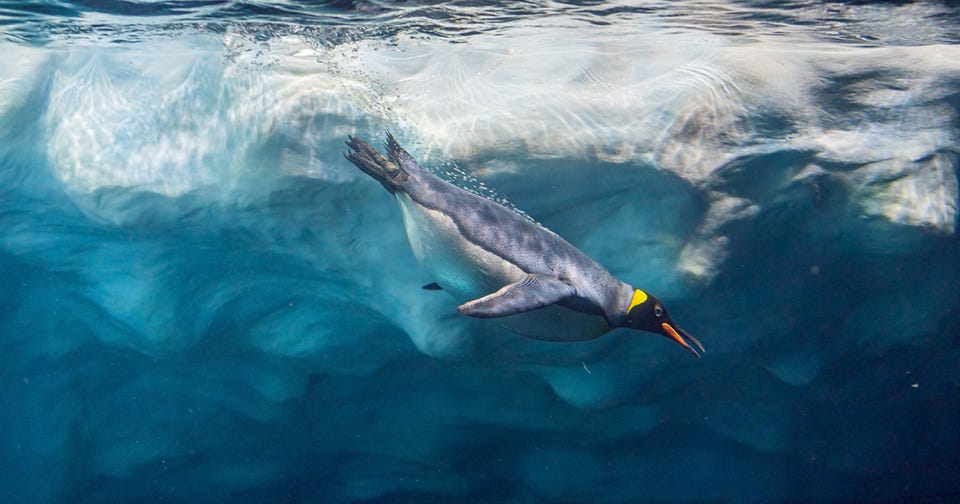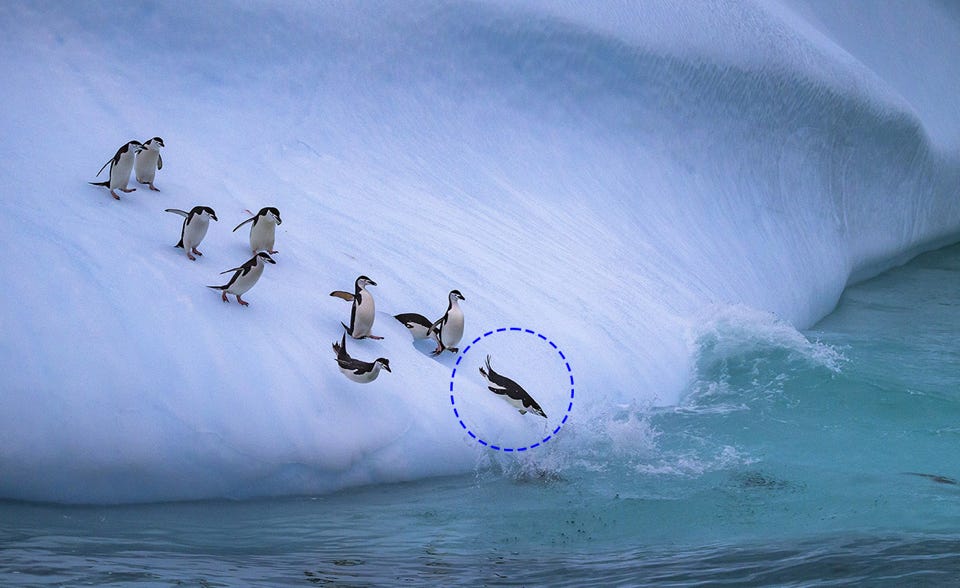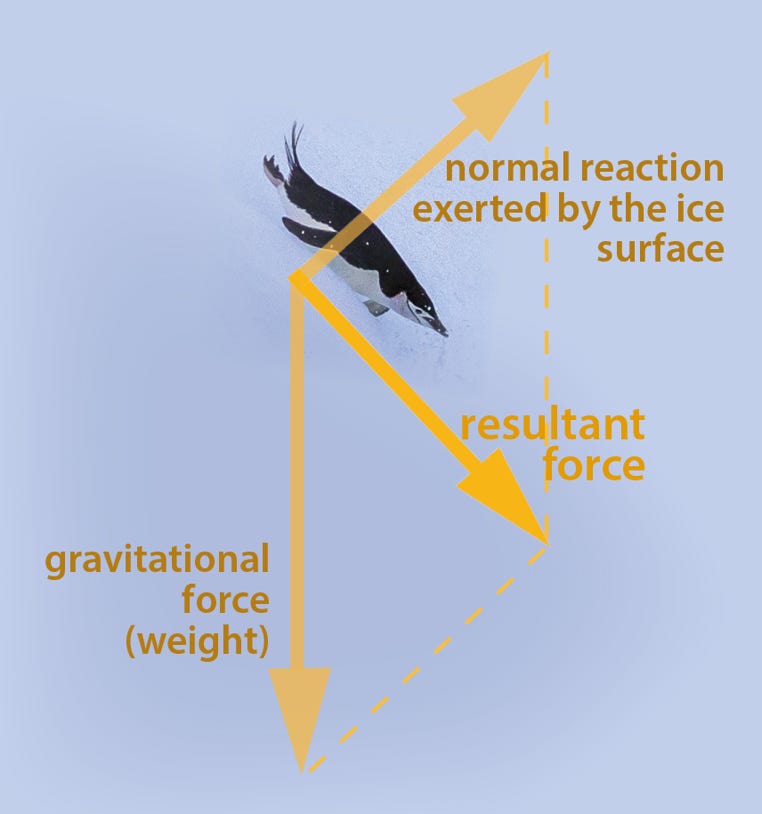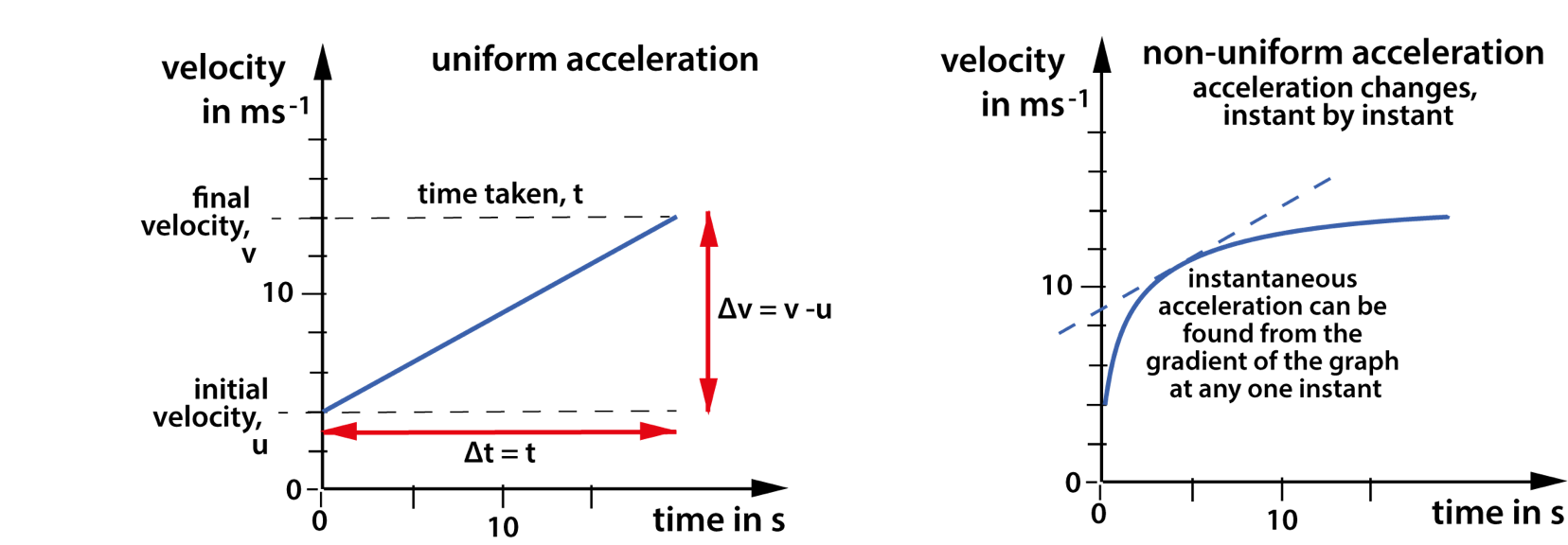
Connecting pre-university students with professional science
Contextual Curriculum Connections
A4 constant force and uniform acceleration; an equation of motion
in the context of penguin motion

Penguins spend time on land, but it is in the sea that they catch their food, and in which they move more gracefully.
A penguin chasing fish may use forces to change its velocity – changing direction without always much change in speed.
Water is a resistive medium. It’s necessary to do work to keep moving, even at constant speed.
Grade A+ imagery of emperor penguins and how they reduce drag force to emerge quickly from water into the air and onto the ice,


Going fishing.
Air provides much less resistance to motion than water does. Air resistance at low speed can often be ignored.
Ice, also, presents little resistance to sliding.
It’s not unreasonable to neglect all resistive force for the circled penguin.
There are two independent forces acting on the penguin – weight and normal reaction.
Normal reaction is a force exerted by a body of material in response to force acting on it.
There is a normal reaction force acting on you now (unless you in a state of weightlessness).
The normal reaction is at right-angles to the surface (normal) and varies in size (reaction).
The resultant of these forces is the net force and is parallel to the surface. It accelerates the penguin towards the water.
If the net force is constant then so is the acceleration (F = ma). It’s uniform acceleration.
Uniform and instantaneous acceleration
acceleration, a = rate of change of velocity, Δv/Δt

Every instant has acceleration, but it doesn’t change.
Every instant has its own acceleration and if the line is curved they are all different.
acceleration, a = Δv/Δt = (v - u) / t,
provided that acceleration, a, is uniform.
For uniform acceleration, and only for uniform acceleration:
acceleration, a = (v - u) / t
at = v - u
v = u + at
This is called an equation of motion and can be used to calculate any one of final velocity, v, initial velocity u, acceleration, a, and time, t, when the values of the other three variables are know.
There is no need to know the value of displacement (distance in a specified direction), s.
If the penguin has an initial velocity of 0.5 ms-1, an acceleration of 4 ms-2, and the time taken is 2 s, then its velocity when it first hits the water can be calculated:
v = u + at
= 0.5 + (4 x 2)
= 8.5 ms-1
When moving from air into water the penguins acceleration will not be uniform, and while swimming it may experience many accelerations and deceleration (negative acceleration).
Uniform acceleration and changes in velocity of a rolling ball.
A short talk about penguins, bubbles, and hydrodynamics
(C) David Brodie 2025 Note that all external videos and websites remain copyright of the creators
